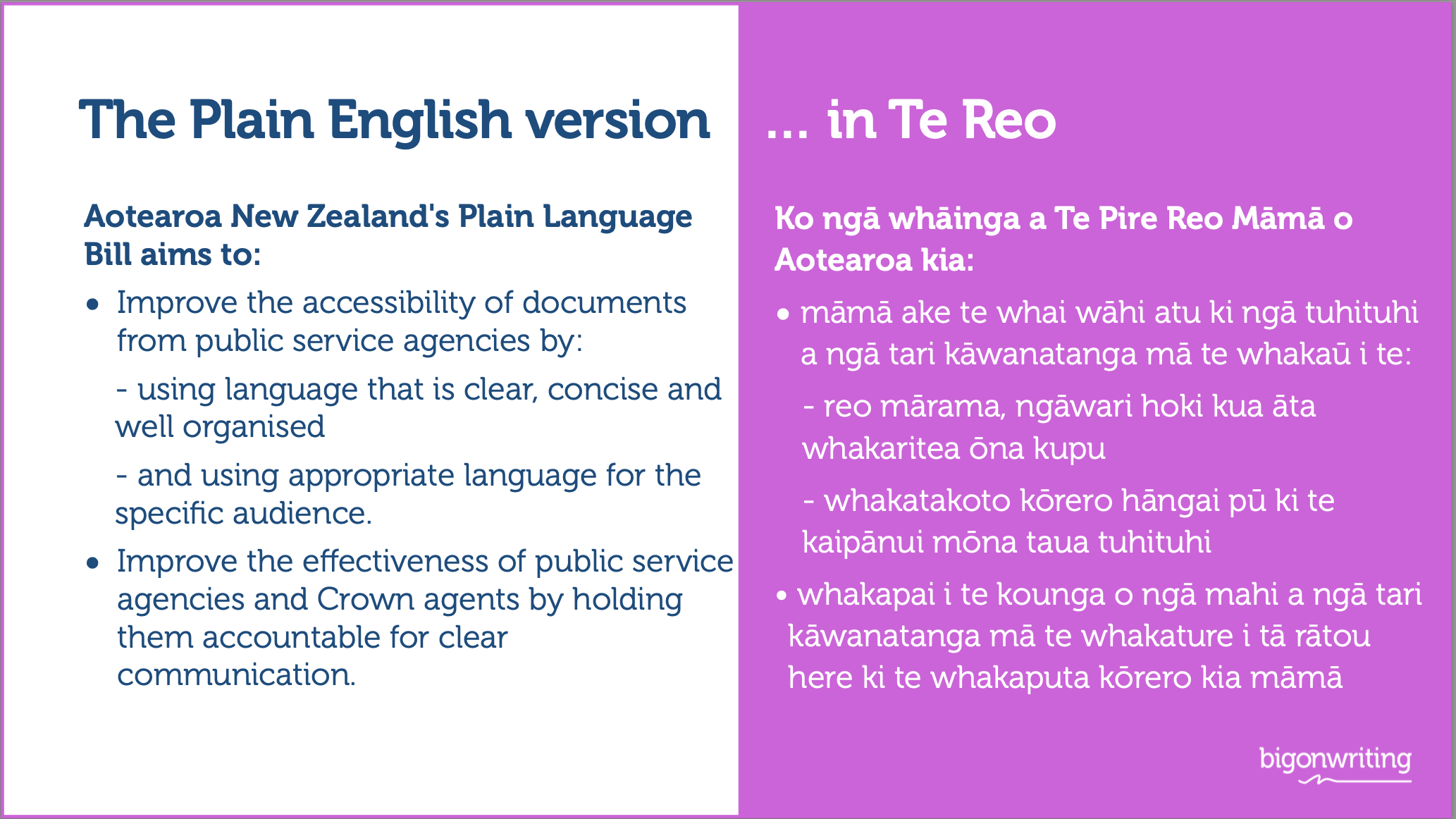

Just over a week ago, the Plain Language Bill passed into law in New Zealand, a formalised intention to make language in official documents and websites more accessible. There’s perhaps no better example of how complex language and structure creeps in than when you look at the wording of the bill itself, as reported by RNZ.
Oh dear. We gave the Plain Language Bill a plain Englishbrushover:
We all deserve plain language, and we all want plain language - especially in website content where your user is trying to navigate a site.
Yes, even those lawyers and policy makers, and other intellectual boffins: studies have shown that people with high literacy prefer plain language too. And more than that, plain language is absolutely essential to meeting the needs of migrant, disabled and other marginalised communities who may struggle more with complex, jargon-heavy pieces of writing.
The good news is that we’ve noticed loads of businesses and government agencies have already been putting work into using plain language in website content and more, paired with a broader focus on reaching accessibility design standards.
However, using plain language in your communications is a bit like sweeping the floor but leaving the door open – the dust will keep creeping in, and your battle will be ongoing. Plain language requires a perennial vigilance for the verbose vernacular (that’s a wee plain language joke for ya).
The first thing to remember is, you don't have to be perfect. But here are our favourite tips:

You have to love apps. Everyone knows Grammarly and you can get the online version free. But here's another tip - drop your copy into the online Hemingway app. It’s not a magic bullet, but it will give your writing a readability grade, and suggest where you can make improvements. Also, we have two Te Reo experts on board for wider recommendations but if you just want a bit of copy translated, this is an awesome service, Okupu.
We can take you through a Plain English presentation, a Plain English workshop or, if you just want someone to tidy up your copy, the Writers Help Desk bundle may be perfect for you.